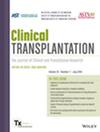Ultrasound-Guided Modified Thoracoabdominal Nerve Block Through Perichondrial Approach for Postoperative Analgesia Management in Living Liver Donors: A Randomized, Prospective, Controlled Study
Abstract
Background
Optimal postoperative pain management in living donor hepatectomy remains challenging, with conventional methods showing limitations. This study evaluated the efficacy and safety of ultrasound-guided modified thoracoabdominal nerve block through a perichondrial approach (M-TAPA) compared to conventional pain management in living donor hepatectomy patients.
Methods
In this prospective, randomized, controlled, single-blind study conducted between April 2024 and January 2025, 50 ASA I-II patients undergoing living donor right hepatectomy were randomly allocated to either the M-TAPA group (n = 25, receiving ultrasound-guided M-TAPA block plus standard analgesia) or the Control group (n = 25, receiving conventional pain management only). The primary outcome was postoperative opioid consumption during the first 48 h. Secondary outcomes included pain scores, rescue analgesia requirements, and complications.
Results
The M-TAPA group showed significantly lower median total fentanyl consumption (p = 0.002) and reduced need for rescue analgesia (p = 0.011) compared to the Control group. Both static and dynamic Numeric Rating Scale pain scores were significantly lower in the M-TAPA group across all time points (p < 0.001). Although the M-TAPA group showed a trend toward reduced nausea incidence (p = 0.066), other side effects were comparable between groups. No M-TAPA block–related complications were reported.
Conclusions
Ultrasound-guided M-TAPA block provides effective postoperative pain management in living donor hepatectomy, demonstrating significant reductions in opioid consumption and pain scores without increasing complications. These findings suggest MTAPA could be a valuable component of enhanced recovery protocols in living donor liver transplantation programs.
Trial Registration
ClinicalTrials.gov identifier: NCT06300372


 求助内容:
求助内容: 应助结果提醒方式:
应助结果提醒方式:


